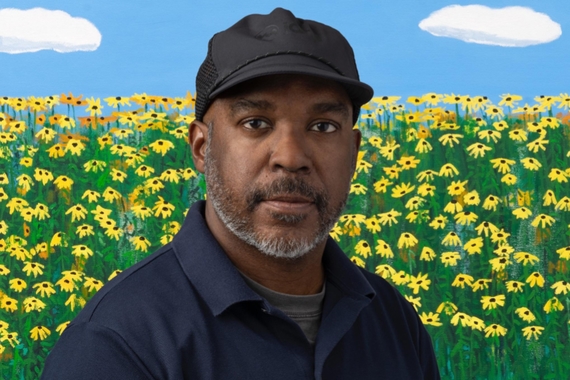On People and Portraiture In a Time of Social Distancing
In September 2018, photographer and CLA alumnus Xavier Tavera opened his exhibition, “On Purpose: Portrait of the Liberal Arts,” at the College’s Nash Gallery. “On Purpose” earned glowing reviews both on campus and off as a striking display not only of CLA’s size and breadth but also of the range of persons that make the college what it is. As one MinnPost review put it, “It’s the people, people.”
But what happens when the people are asked to stay home? What becomes of photography and portraiture in a time of social distancing? CLA Communications Specialist Chris Moore spoke with Tavera, reaching him at his home in Minneapolis.
____________________
Chris Moore: How's your household doing?
Xavier Tavera: We're good. Our two kids, one of them is in Tacoma, Washington, she didn't want to come back, and that's okay, and the other one is in Saint Paul, he's working at a youth farm and he also is keeping his distance. We went and saw him last week—walked with him to a park and then came back. These couple of weeks have been super, super busy and it's going to be busy all the way until May [when the semester ends]. After that, I think it's going to slow down.
CM: I know you’re currently teaching two courses in photography in the College. How are classes going? How do the students seem to be doing?
XT: They're going very well. I completely changed the strategy, because I have the same questions as the students, right? We're getting an enormous amount of information and some of it is true, some of it is not, we're trying to figure this out, pretty much like the world is in a very different situation. Why do we care about image-making and learning how to use a camera, right? It’s not the time, right? So, if I have those questions, what am I doing teaching? There should be something else that I should be doing, helping... I don't know, right? So I'm assuming they have also those same questions.
So the first day that we came back I said the first thing that we're going to do is toss that syllabus out the window and we're going to work on three projects. Essentially, one is sixty-something pictures and it's a diary. It's an image diary. So they're taking one image, either with a cell phone or with a camera, of their situation right now… So it's going to be very interesting to see this material in three months, six months, five years, ten years, right? This is where we were and where we are now, right?
CM: Yeah.
XT: So that's one of the projects. The other one is to do some typology, so they can work on the computer, outsourcing images and making images of their own. So I have them doing two typologies. And they've been having a lot of fun doing that because right away they do a typology of 15 items and it looks like art, so it's like, "Whoa, this is cool." Why not, right?
They're taking a lot of—from stupid stuff that they find around to, one of them did the whole typology of hand sanitizers. So, people are reacting to what we're going through right now, so that's very interesting.
And the third one is about nature. I want them to get out of the house and move around because just being inside in an environment like that—it sometimes might not be super healthy. They're back at their parents' home, right? Young adults and there's all these frictions, right? So it's like, stand up, walk around the block, go to a park, walk around, come back, right? [All] through pictures of nature. They're intended so they, one, keep active, and then also assimilate what are they going through these few weeks.
CM: I know the New York Times has been doing a lot of coverage of how photographers are responding to this moment. The arts help us to make sense of what we're going through. Do you find that you're also taking pictures?
XT: Yes, I am. I get super, super anxious if I don't. I came up with—and probably somebody else is doing it also somewhere—I titled the photo project "Ten-Foot Portraits.” About six years ago, I did something very similar. I went around, I took family portraits [of people on my block], most of them in their homes. At the end, I had an exhibition in a gallery and the whole block came and it was elders, toddlers, kids, everybody was there and it was very good because they were looking at themselves and they were looking inside the houses of their neighbors. And something that, if I didn't do this project I wouldn't be able to do that. And it was a whole big party and at the end, they just took their portrait with them. So all of them are either hanging in their houses or somewhere. Back then it was a little challenging to convince people to be photographed in their homes. In fact, the people that I thought were going to be the most outgoing and way into the project were the ones that like, "What do you want? Why us? What are you going to do with the photos? Where are they going to end up?" Stuff like that. Little by little I convinced them to do it.
This time around I'm not going into their houses, but it was easier. It was easier. My wife sent out a call and people started lining up. We agreed on a time—I will approach the front, they will come out, and right there on the steps of the front door I will take a picture, chat a little bit because people want interaction, and then leave. I think tomorrow at 6:00 I have, maybe it's going to be the last one, I have somewhere around twelve, fifteen images. And that has been very interesting, that has kept me going, that has also [kept me from going] crazy because I'm not producing.
CM: Are you posting them as you go or you're going to hold onto them first and then figure out what you want to do with them?
XT: I want to do some kind of gallery, online gallery, that people can not only just see their picture but browse through everybody else. So, that's the point, that we [get to] know each other. It's crazy, three houses to the north, there's a young couple with a three-year-old. They signed up, I arrived, I haven't met them in my life and I asked, "Well, how long have you been here?" And they're like, "Five years." And I'm like, "That's crazy." It's not on them; it's on me, right? I haven't made any effort or anything to know who's around me. So that's kind of, I don't know, odd, maybe that's how we live, maybe that's how we isolate ourselves.


At left, Tavera's self-portrait from his "On Purpose" exhibit. At right, an image from Tavera's new series, "Ten-Foot Portrait Project."
CM: I was also thinking about your exhibit “On Purpose” in the context of the work that I do in the college, and what I so loved about that project and about photography and portraiture in general, is the fact that, more than the photograph it produces, it requires an interaction. A personal exchange.
XT: Absolutely.
CM: I don't know if a moment like this makes you think about that and think about what it is about portraiture and photography that you love most.
XT: What I enjoy the most is not the click and having the picture printed out and on the wall. That's just an outcome, right? That's a by-product, let's call it a by-product. For me what I enjoy the most is from the second that I have that idea: how I'm reaching out to either places or people to get access, how am I going to transport myself there, when I get there, what am I going to do, and finally when I'm in front of people or places, to have those conversations. And they can be stupid conversations; somehow being in front of somebody with a camera allows me to ask whatever is on my mind and somehow people respond to that. And I talk a lot. I'm an introvert, but when I'm photographing, while I'm setting up, metering for light and all that stuff, I ask a lot of questions and I enjoy that a lot. I enjoy that enormously because it gives me a whole context of who these people are and what is happening.
In the end, I don't photograph a lot. If I'm going to photograph a family here it's going to be, I think, between five and six frames and that's it. I get the ladder, tripod, and camera, I go there, set up, converse, photograph, and at the end, we spend a couple of minutes talking and then that's it, I come back. I don’t so much enjoy the editing process, and then it becomes a print. So, that whole chunk, I call the photographic experience, is what I enjoy.
Before going into quarantine, I was in Tijuana photographing deported veterans. So that took some calls and emails and all the way until I was right there on the border having breakfast and the veteran is calling me like, "Are you going to be here or not? When is it going to be? Today or Wednesday?" And I'm like, "I thought we had this lined up." All the way until I got across the border, got a taxi, went there, and spent the whole day interviewing veterans, right? That is super, super exciting. That's what I'm looking for, right? So, yeah, it is not that fraction of a second that I'm photographing and it's not the paper in the wall. It is everything else that comes with the photo.
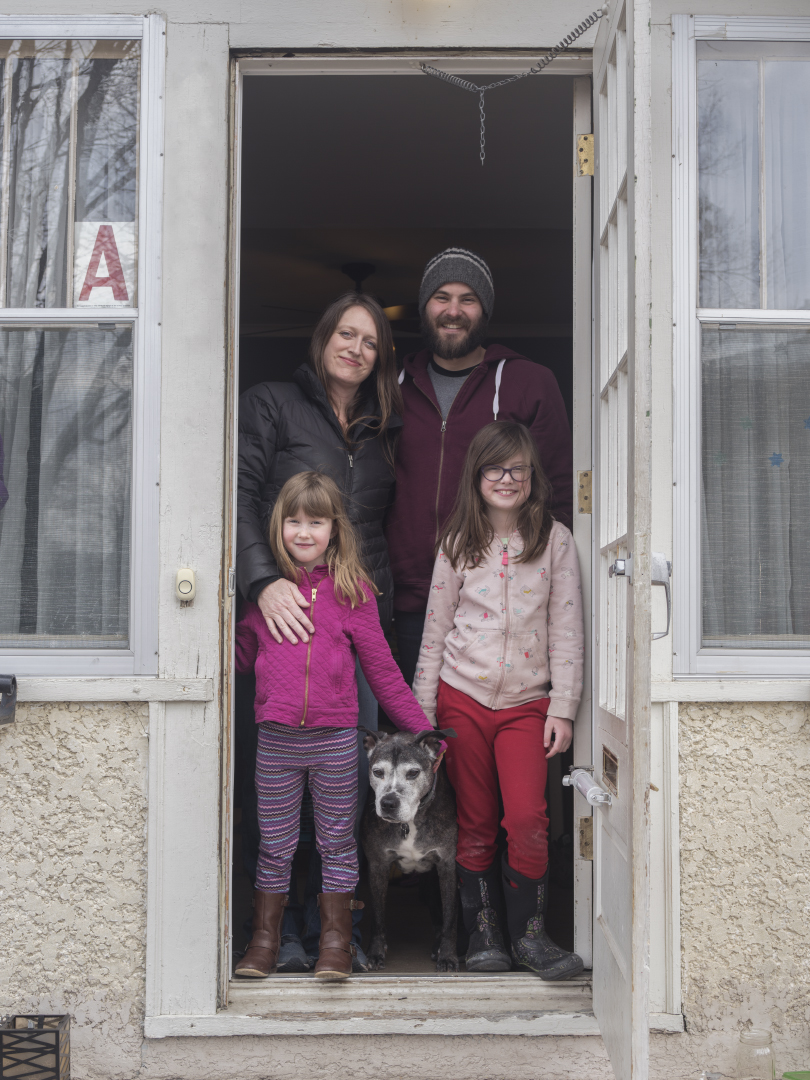
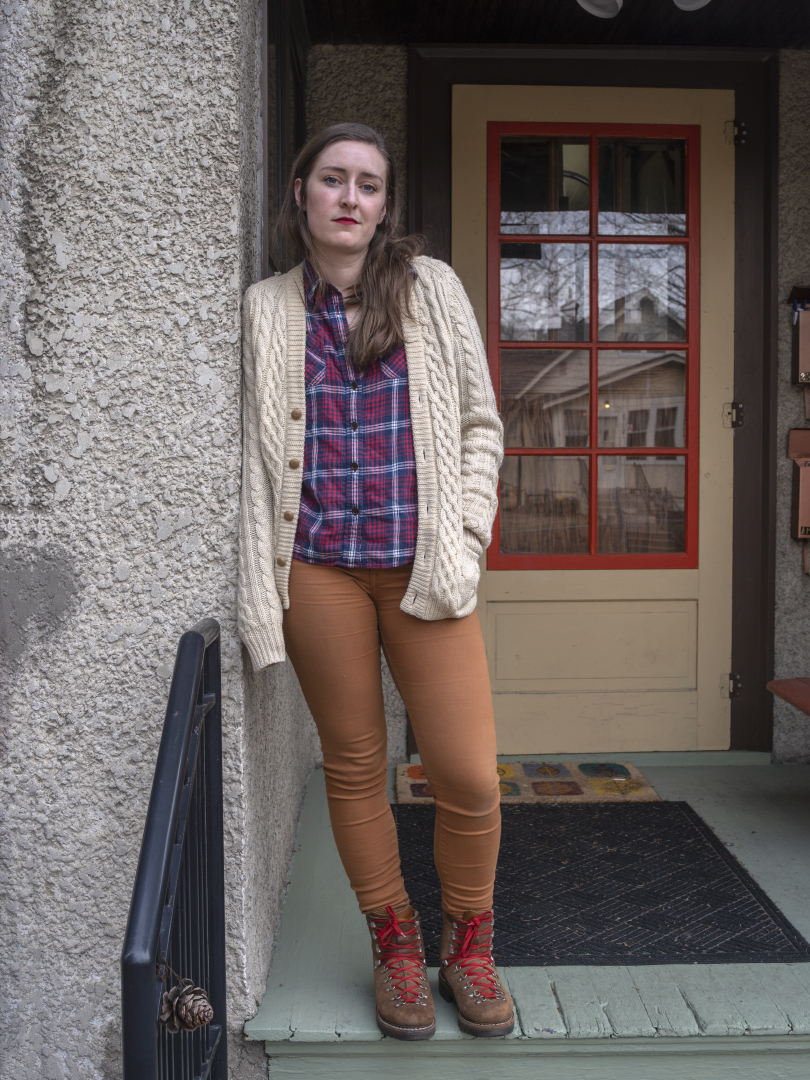
Images from Tavera’s new series, “Ten-Foot Portrait Project.”
CM: What I also liked about, or what I was thinking about with regard to the “On Purpose” exhibit for the college is that, sometimes, when you think about a university you forget that it's really the people that make the institution. Everyone refers to the institution as the University of Minnesota or the College of Liberal Arts, but what the exhibition drove home was that the Department of Economics doesn't exist without staff and faculty and students, just like CLA Career Services doesn't exist without counselors and administrators and even student workers. That was something that impacted me particularly because you looked around [the Nash Gallery, where the exhibit was on display] and it was a representation of the college, but it was a representation of the college by way of people that make the college happen. It made me think about how we talk about the college and how we represent ourselves to audiences…
XT: … that's something that also made people very nervous. Instead of seeing how you're seeing it, it's like, "Oh, 150 years and it's going to come to be represented in two, three people. Who are they going to be?"
CM: Sure.
XT: It's a complex issue, but I knew it from the minute they told me, "Okay, there's an idea here."
CM: So when you were choosing, was that part of the intention, to get beyond older ways of representing the institution?
XT: Yeah, yeah. I pushed for that a lot. And some departments got it right away. Got it immediately. And one of them, and it's one of the portraits that I like the most, is the Philosophy Department, where there's not only a woman but a mother with her kid. If we close our eyes and we think about a tree, it’s going to be this way, if we think about a house, it's going to be this other way, and if we think about a philosopher, it is going to be a white old dude. It's not going to be a mother, right? And they were like, "Yes." They completely got it.
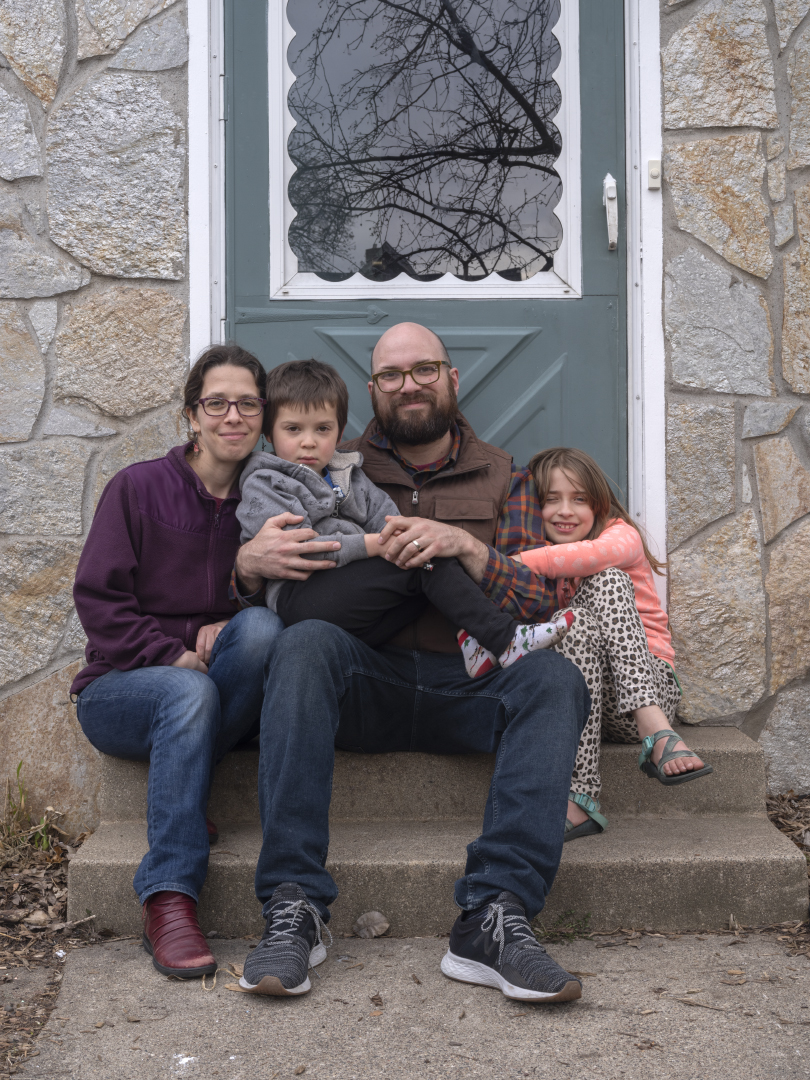
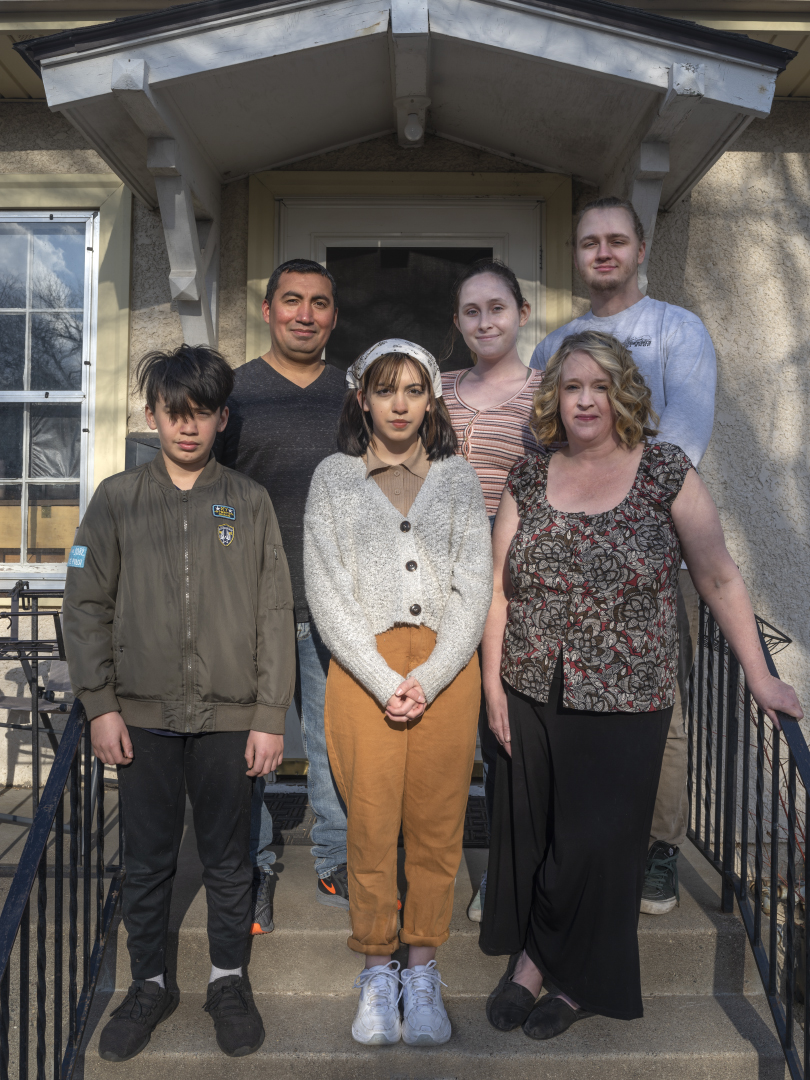
Images from Tavera’s new series, “Ten-Foot Portrait Project.”
CM: I was thinking about the amount of time that you spent covering CLA and covering the liberal arts. Learning what you learned about the college, what do you think the future is, or how do you think the college responds to a moment like this?
XT: Oh my gosh, that's super complicated. That's a super complicated question. Well, I mean, we're putting... This situation is flipping everything around, right? It's flipping priorities and flipping the way we think and the way we react to things, how we function, what is a priority, right? So, I don't know, a complete reevaluation of what do we do, what are we doing, what are our priorities and how do we empathize with people. Or the opposite, right? How do we repel? Don't get near me. It could go either way.
Don't get near me because I don't know you and I don't know what kind of bug are you going to bring close to me and my family. It can be also this tribal thing, right? You and I, you and your family and my family, we know each other, we don't have it, let's meet, let's gather, but what about if somebody else comes, it's like, "Eh, I don't know. I don't know them. I don't want them near me." So it could be this, it could go so many ways. My hope is that all of a sudden we start thinking differently.
CM: That's true also on a global scale, right? Where this moment could do one of two things. It could make us realize or be reminded yet again how interconnected we are and we can take this moment to look out for one another and develop vaccines and testings in concert and work as a global community, or we can take that approach you mentioned and say, "Well, we're good, we're going to close off, I'm sorry you have the disease, unfortunately, we can't give you these masks right now, we need to keep them just in case."
XT: And it's happening, right? Closing borders, closing—to a point they were closing states as well. I don't know about Wisconsin, I don't know about the Dakotas because they're not enforcing all this, right? Yeah, it's interesting how we are behaving… I don't know, it could go so many ways. But, again, trying to be positive, I think it's a great opportunity to reassess.
CM: What's the role of education in that reassessing?
XT: It's enormous. It's enormous. It deals with everything—I mean, from basic medical [knowledge] to racism to the social to... right? From analyzing to putting into practice. I think it's completely, completely essential. Being more informed, knowing what type of information we are consuming. And that's part of education.
And I'm broadening it, so, not just institutional education. The more immediate [need] is how we take care of each other and how are we, I don't know, being empathic about the other person. The crazy thing is that we are tested all the time. We are tested continuously about what's going on. I went to my in-laws to deliver some groceries, and when I'm coming back there's a lady in the car in the middle of the street, her eyes are wide open and [she’s having] some car troubles, right? I attempted to get to the median, I couldn't, I passed by, and then I'm like, "Well, maybe somebody else should take care of that." Right? But then I'm like, "Eh." I'm falling into that same panic and that same, I mean, there's another human being [there]. Maybe I just get out of the car and push the car to a safer place and be on my way and come back and wash my hands, right?
CM: You had said about your class this spring that you’re just trying to respond to the moment right now. Thinking ahead to your fall classes, and thinking about this theme of reassessing, how are you thinking you want to change things up for the fall class? What issues are you hoping to address?
XT: Of course, it depends on what is the model that we're going to follow, meaning either a hybrid of contact and online, or fully online, or fully in-person. All my classes are technical to a certain point, but from there [I want to] make the student understand that photography is not photography only. That photography is neither the equipment or the final print. Photography is about this human interaction. They can construct something or go and take something, but it's about how we address the rest of the world. And I think that's going to continue. And I’ll maybe put even more emphasis on that. Put a little more emphasis on that notion of, Who are you going to photograph? What are the conditions? Is there a power structure?
At least one person out of the sixty that I have is going to say, "Oh, I'm going to photograph homeless people." Let's have that conversation, right? I'm not going to censor anything, but let's think about how a student from the U, regardless of their background—anybody with a camera in the street has all of a sudden put in place a power structure—and what are you going to do with that? So I think pushing that is going to be even more important than if they know the intricate parts of Lightroom or Photoshop. If you don't know [those programs], it's going to be just fine, it's going to be okay. But if you don't know how to interact with people or how to come up with an idea to develop, then let’s work on that.
CM: Is there a risk that, in teaching photography during a situation like this, a time of social distancing, that it could be tempting to the photographer, whether they're just taking pictures in their home, or taking pictures at a greater distance of individuals, to lose sight of the fact that human interactions are really what makes photography as an exercise? Of course, the model that you're using right now with the ten-foot portraits—with the idea that you and your partner are making appeals in the neighborhood for neighbors to partner with you in the making of a photograph and really in the making of an experience—that's a great example to provide to our students.
XT: That same negotiation is in every portrait that I make. It's never like, "I'm going to make a portrait." The portrait is made by two people. If the other person is not there with me, if I cannot make that other person feel comfortable enough with me and the equipment, it's going to show. It's going to show in the photo. So it's part of my job to make them feel comfortable, and that they are doing their part to make that portrait. It's impossible, I don't believe in the taking. In the taking, not capturing.
____________________
To see more of Xavier Tavera’s work, visit xaviertavera.com or follow @taveraxavier on Instagram.


